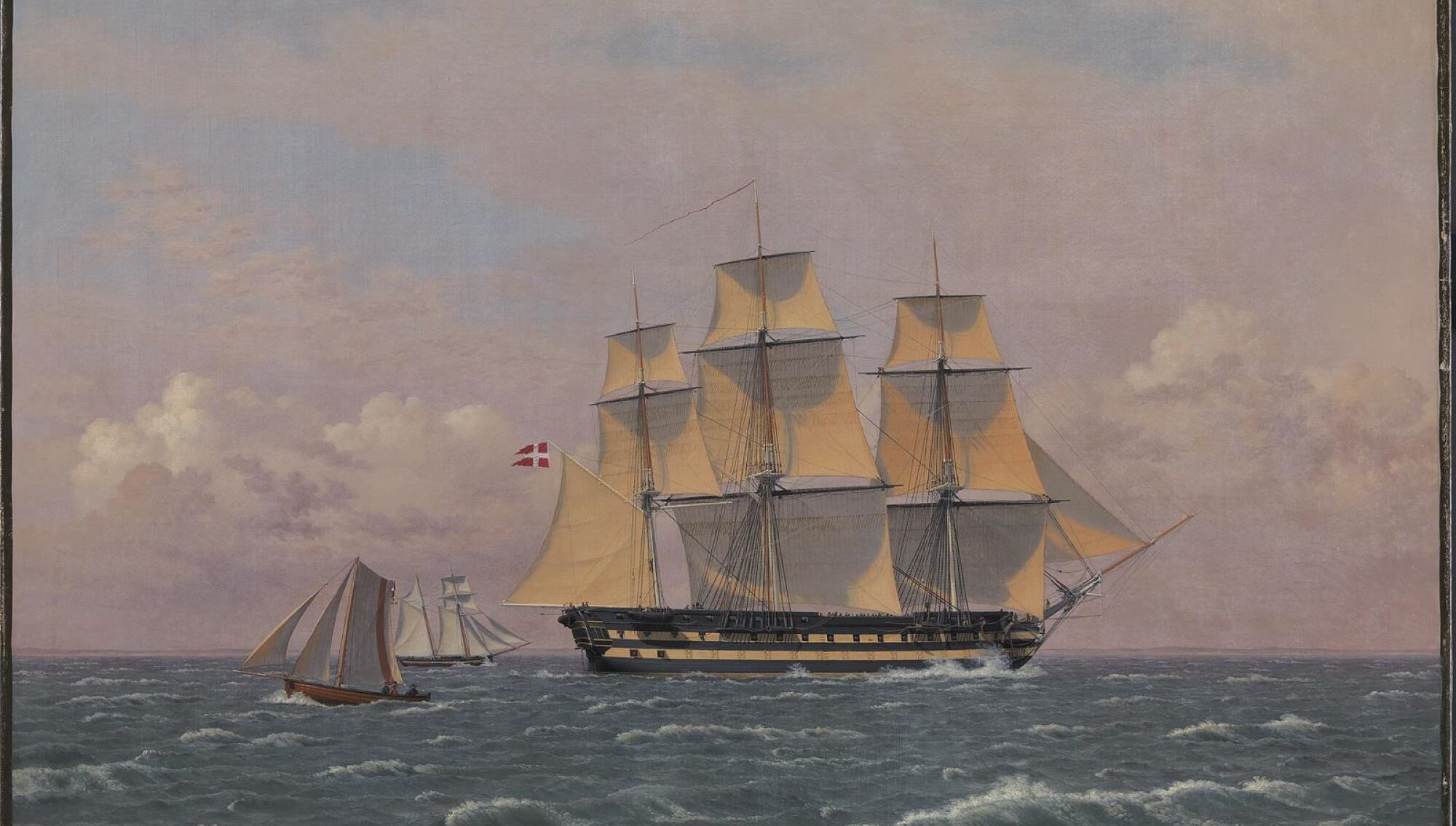

Behind a beautiful oil-on-canvas painting is, well, its canvas. To most art museum visitors, that fabric might be no more than an afterthought. But the canvas and its chemical composition are tremendously important to scientists and conservators who devote their lives to studying and caring for works of art.
When they examine a canvas, sometimes those art specialists are surprised by what they find. For instance, few conservators expected a 200-year-old canvas to contain proteins from yeast and fermented grains: the fingerprints of beer-brewing.
But those very proteins sit in the canvases of paintings from early 19th century Denmark. In a paper published on Wednesday in the journal Science Advances, researchers from across Europe say that Danes may have applied brewing byproducts as a base layer to a canvas before painters had their way with it.
“To find these yeast products—it’s not something that I have come across before,” says Cecil Krarup Andersen, an art conservator at the Royal Danish Academy, and one of the authors. “For us also, as conservators, it was a big surprise.”
The authors did not set out in search of brewing proteins. Instead, they sought traces of animal-based glue, which they knew was used to prepare canvases. Conservators care about animal glue since it reacts poorly with humid air, potentially cracking and deforming paintings over the decades.
[Related: 5 essential apps for brewing your own beer]
The authors chose 10 paintings created between 1828 and 1837 by two Danes: Christoffer Wilhelm Eckersberg, the so-called “Father of Danish Painting,” fond of painting ships and sea life; and Christen Schiellerup Købke, one of Eckersberg’s students at the Royal Danish Academy of Fine Arts, who went on to become a distinguished artist in his own right.
The authors tested the paintings with protein mass spectrometry: a technique that allows scientists to break a sample down into the proteins within. The technique isn’t selective, meaning that the experimenters could find substances they weren’t seeking.
Mass spectrometry destroys its sample. Fortunately, conservators in the 1960s had trimmed the paintings’ edges during a preservation treatment. The National Gallery of Denmark—the country’s largest art museum—had preserved the scraps, allowing the authors to test them without actually touching the original paintings.
Scraps from eight of the 10 paintings contained structural proteins from cows, sheep, or goats, whose body parts might have been reduced into animal glue. But seven paintings also contained something else: proteins from baker’s yeast and from fermented grains—wheat, barley, buckwheat, rye.
[Related: Classic Mexican art stood the test of time with the help of this secret ingredient]
That yeast and those grains feature in the process of brewing beer. While beer does occasionally turn up in recipes for 19th century house-paint, it’s alien to works of fine art.
“We weren’t even sure what they meant,” says study author Fabiana Di Gianvincenzo, a biochemist at the University of Copenhagen in Denmark and the University of Ljubljana in Slovenia.
The authors considered the possibility that stray proteins might have contaminated the canvas from the air. But three of the paintings contained virtually no brewer’s proteins at all, while the other seven contained too much protein for contamination to reasonably explain.
“It was not something random,” says Enrico Cappellini, a biochemist at the University of Copenhagen in Denmark, and another of the authors.
To learn more, the authors whipped up some mock substances containing those ingredients: recipes that 19th-century Danes could have created. The yeast proved an excellent emulsifier, creating a smooth, glue-like paste. If applied to a canvas, the paste would create a smooth base layer that painters could beautify with oil colors.

Eckersberg, Købke, and their fellow painters likely didn’t interact with the beer. The Royal Danish Academy of Fine Arts provided its professors and students with pre-prepared art materials. Curiously, the paintings that contained grain proteins all came from earlier in the time period, between 1827 and 1833. Købke then left the Academy and produced the three paintings that didn’t contain grain proteins, suggesting that his new source of canvases didn’t use the same preparation method.
The authors aren’t certain how widespread the brewer’s method might have been. If the technique was localized to early 19th century Denmark or even to the Academy, art historians today could use the knowledge to authenticate a painting from that era, which historians sometimes call the Danish Golden Age.
This was a time of blossoming in literature, in architecture, in sculpture, and, indeed, in painting. In art historians’ reckoning, it was when Denmark developed its own unique painting tradition, which vividly depicted Norse mythology and the Danish countryside. The authors’ work lets them glimpse lost details of the society under that Golden Age. “Beer is so important in Danish culture,” says Cappellini. “Finding it literally at the base of the artwork that defined the origin of modern painting in Denmark…is very meaningful.”
[Related: The world’s art is under attack—by microbes]
The work also demonstrates how craftspeople repurposed the materials they had. “Denmark was a very poor country at the time, so everything was reused,” says Andersen. “When you have scraps of something, you could boil it to glue, or you could use it in the grounds, or use it for canvas, to paint on.”
The authors are far from done. For one, they want to study their mock substances as they age. Combing through the historical record—artists’ diaries, letters, books, and other period documents—might also reveal tantalizing details of who used the yeast and how. Their work, then, makes for a rather colorful crossover of science with art conservation. “That has been the beauty of this study,” says Andersen. “We needed each other to get to this result.”
This story has been updated to clarify the source of canvases for Købke’s later works.
